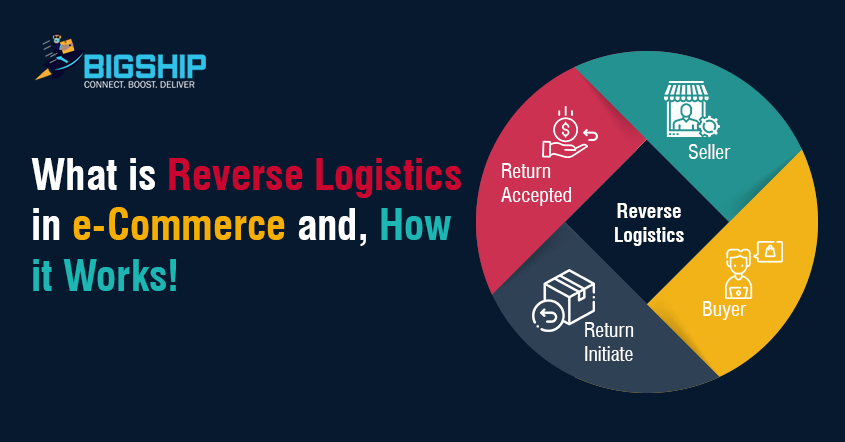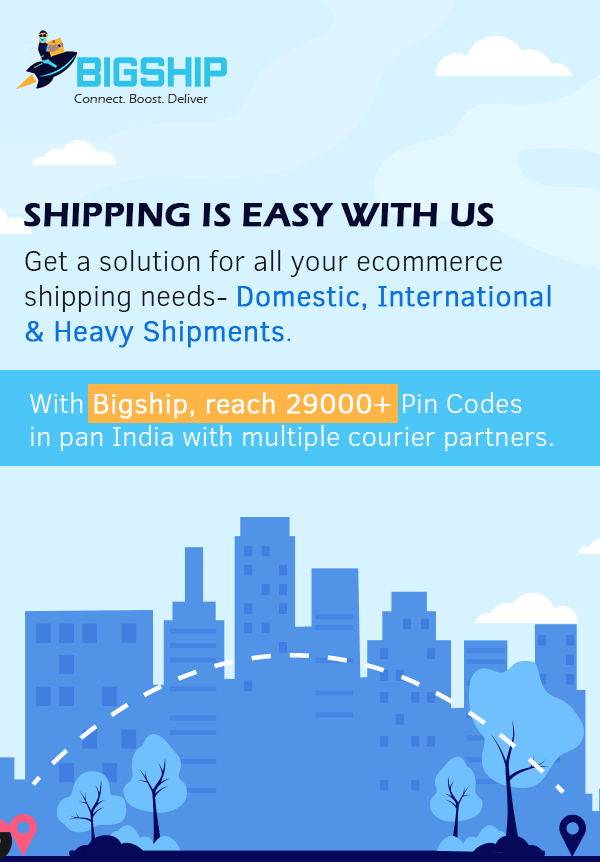What is Reverse Logistics in e-Commerce And How It Works

Number of products in an eCommerce business, which is shipped every day to different customers at different locations.
Hence, different logistics are strategically essential to manage the flow of these products. The regular shipment allows the different businesses to function smoothly and helps balance the economy. Therefore, reverse logistics and regular logistics are now an integral part of business and marketing strategies.
Reverse logistics is referred to the reusing of all products and materials in an e-commerce business. In this process, every product is checked properly before reaching its final destination. It is often used to get all the products adequately disposed of. In addition, it is used to handle the return of any product from your customer.
The products that the customers return is often repaired and refurbished. A well thought and designed strategy can help achieve the company’s long-term goals, and It can also help a manufacturing company spend less revenue on returning and recalling any product. This process is almost concerned with the reverse supply chain in logistics.
There are many reasons when reverse logistics occurs; some of the prevalent reasons of reverse logistics are-
• Destruction of the products which are now expired like food, packed products, medicines, health, and care products.
• Return of rejected goods to the producers and suppliers.
• When an extra quantity of products is distributed from one place to another.
• taking away containers packaging’s from a particular area.
• Removing of products and capital equipment to the next area of response.
Difference Between Reverse & Regular Logistics
There are not many differences between both types of logistics; a minimal amount of difference is there-
Regular logistics is also called forward logistics. It is referred to as the process of transporting the product from the seller to the customer. At the same time, reverse logistics is the transportation process of the product from the customer to the seller. There are specific differences between these two types of logistics.
They are listed down below.
• In reverse distribution, products are returned to the manufacturer or suppliers for repair, recalling, or returning. In regular shipping services, the products are directly sent from the supplier to the customers.
• Forecasting is usually straightforward, whereas, in reverse logistics, forecasting is more complicated.
• In reverse distribution, many products are from different points to only one point. But, in regular logistics, several different products are sent to different destinations from one single destination.
• In reverse logistics, product packaging is often damaged or done incorrectly, but the product packaging is uniform and correct in regular logistics.
• In reverse distribution, the destination or router is unclear, but those are clear in regular logistics.
• The cost for reverse distribution is not directly visible, but it is visible in regular logistics.
• Inventory management strategies may not work correctly in reverse logistics, but this management strategy works fine and adequately in regular logistics.
• The reverse logistics process is less transparent, but the normal logistics process is visible and transparent.
• Speed of shipment is not essential in reverse logistics, but it is the top priority in regular logistics.
• Importance of reverse logistics.
• Reverse logistics is very much necessary in an e-commerce business. Not only does it ensure product reuse, but it also holds a lot of other benefits for an e-commerce business. It ensures efficient.
• Supply chain and asset recovery.
• It often helps to extract the maximum shelf life of a product.
• It also opens the possibilities of recycling, refurbishing, repairing any product.
It is very much crucial in asset recovery. This strategy also decreases the expenses of returned products. These expenses include shipping charges, warranty expenses, repairing costs, etc. It may also include a refund to customers in case of defective products.
This type of logistics process increases customer loyalty. Therefore, the company can have a better return, and distribution also increases recycling and reusing of products; in electronics, recycling and reusing means more minor data breaches and more security.
How Does it Work?
It is a multiple-stage process. This process is very much easy to understand. There are key six steps that assure that the company manages the reverse logistics process-
Product packaging and retrieval
This is the first step in this process. The logistics company picks the returned or unused products from the customer or warehouse.
Shipping of returned products
After the pickup, the products are collected in one spot. Then the products are arranged for shipping to the manufacturer. A speedy return ensures customer satisfaction and loyalty.
Repairing, recycling, refurbishing, or fixing
This is the fourth step. The returned products have now reached the manufacturer.
They repair or fix defective products.
Recycling is done in this stage. In addition, some products are often refurbished and made suitable for reuse.
Testing
To test the safety and long life of the products, newly made products or repaired products are shipped in other places for thorough checking.
Processing of shipment
Here are, or recycled products are sorted and prepared for shipment. This step is crucial for supply chain management.
Discarding waste
This is the final step. It involves returning the repaired products to the customers, reselling refurbished or fixed or recycled products, and securely disposing of the wastes.
How Can Reverse Logistics Be Improved?
As we know, reverse logistics is also an integral and essential part of supply chain management. It comes with many benefits like reducing cost, making the product better, and increasing the customers’ loyalty.
A retailer or manufacturer both needs a well-planned logistics strategy to manage the flow of returned goods. There are ways to improve reverse logistics. These ways can be constructive if appropriately implemented.
Creating a “Return and sorting area.”
A fast return of goods is the foundation of the reverse logistics system. Therefore, it is advised to create a stock aareafor return items. These items need to be sorted into four classes as soon as they arrive. Returned products can be sorted in the following sections- restock. Repair, discard, and priority. This way, the products will be organized, and the process will remain accessible.
Having a transparent return policy
A transparent return policy often improves the process. Buyers often search for a reliable return policy before purchasing. If everything is mentioned about the return process of the product, then the customer will trust you and your store.
Sending return labels with shipment
It can be a good strategy. It means that you value your customer. The customer will be happy with this small gesture. This, in turn, will increase the chance of having a profit.
Durable packaging
Durable and easy to open package can improve your reverse logistics system. This ensures minor damage.
Implementing Reverse Logistics
Reverse logistics is an important section of any e-commerce business. This era of e-commerce websites and online business and start-up companies has implemented such logistics as an essential thing. As a result, there is a raising need for an efficient strategy regarding logistics in India. This type of logistics offers sustainable growth and economic advantages. Here, we will discuss how to implement reverse logistics in India and other parts of the world.
To implement a logistics system, a company must have a good return policy. Customers must be able to return a product within a specific time. The policy must also include a fast restocking and reselling of products. If retailers or start-up companies ask for help from third-party logistics or 3PL to open a reverse logistics chain. These companies will take care of the returns, reselling, and restocking.
Implement a proper and accurate tracking system to ensure that customer knows about their orders.
You need to have a dedicated distribution system and protocol channel to ensure the return of damaged goods and wrongly sent products.
Most of all, you have to analyze the data carefully. This data will help you get a clear picture of your best product and give you an idea about your worst and most popular product.



